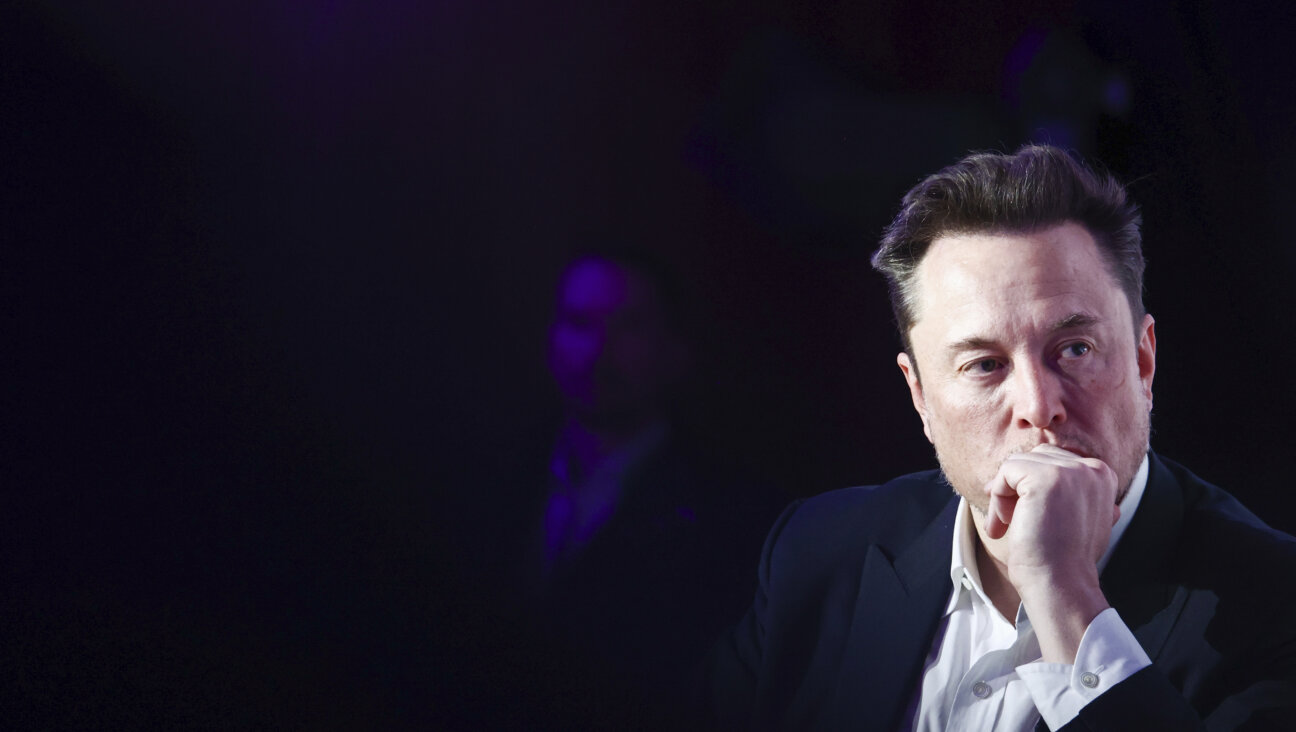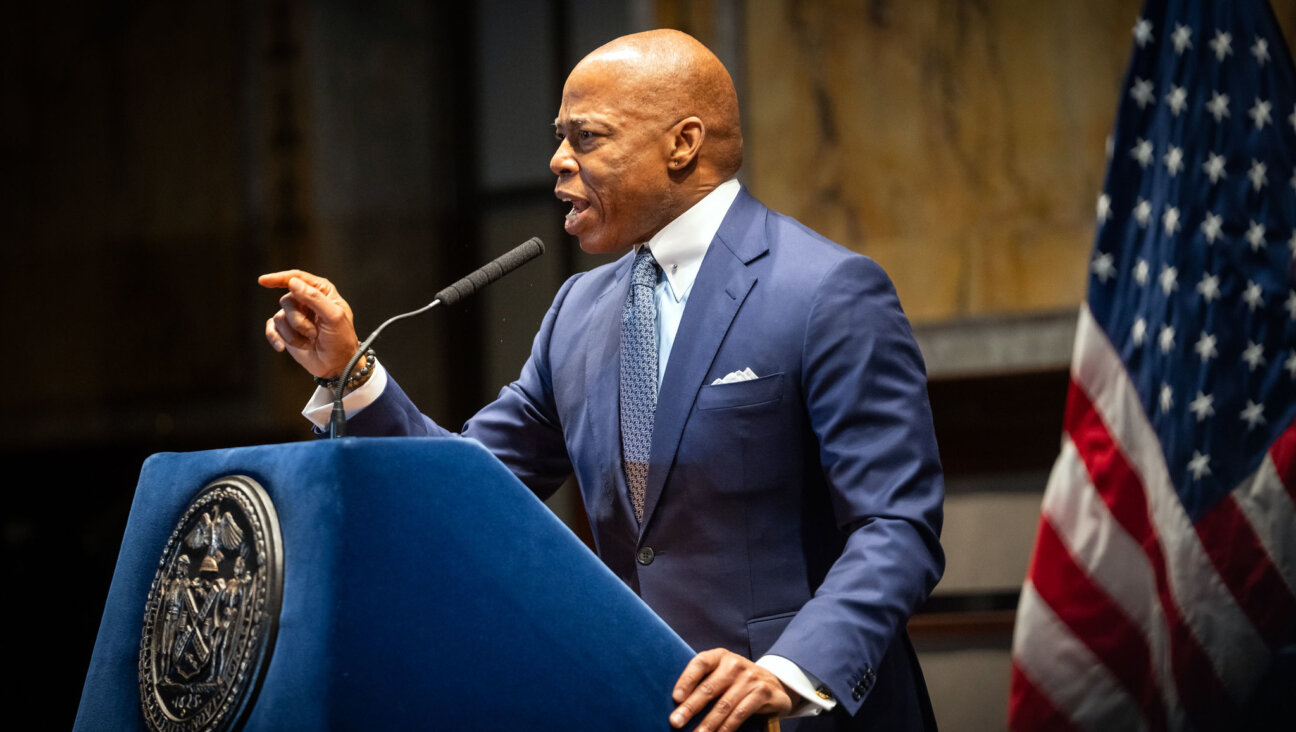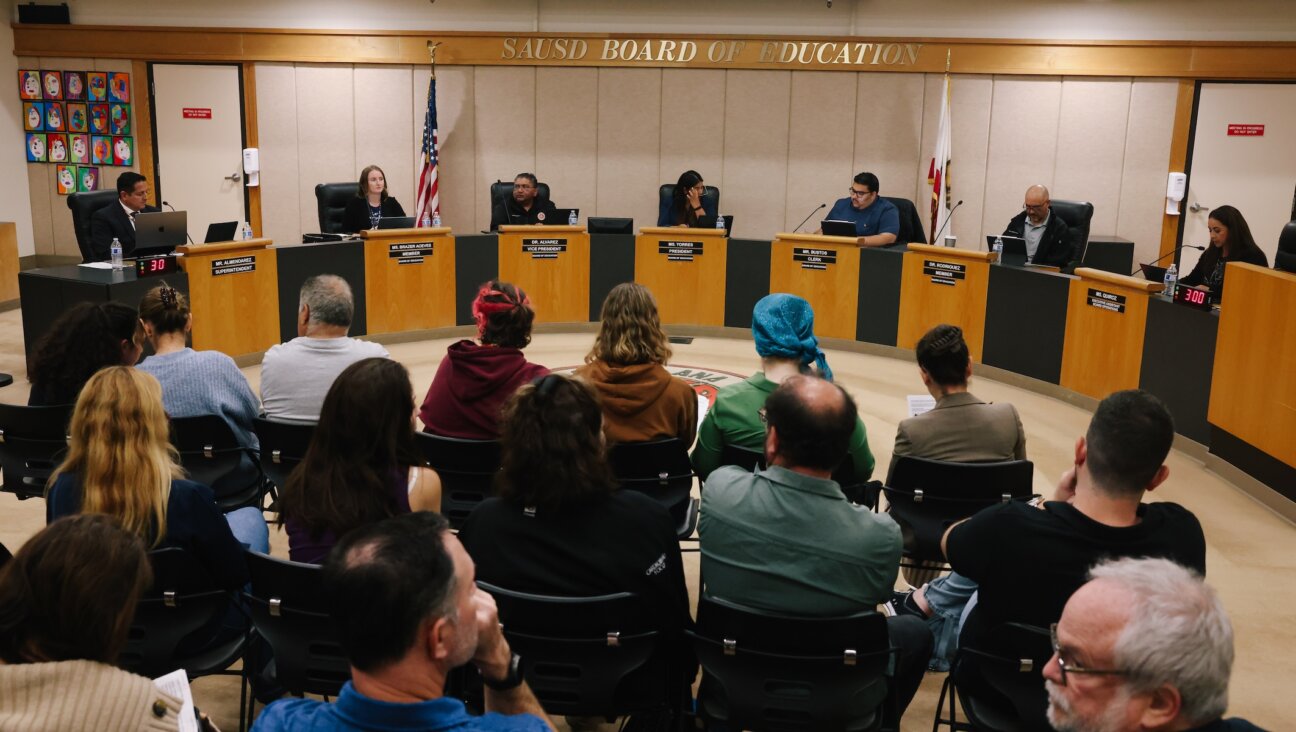The Terrible Beauty of Nazi Aesthetics
Hitler and the Power of Aesthetics
By Frederic Spotts
Overlook, 456 pages, $37.50.
—–
Something in the study of Adolf Hitler repels us. Perhaps it is our own traditional reflex to blot out the memory of our enemies (or to remember them as blotted out, as we do Haman and Amalek) or just the queasy sense that too much time spent in his company cannot be a good thing. Or maybe we fear that by understanding Hitler and his Nazi cohort too well, explaining them, we come perilously close to justifying and rationalizing their evil deeds.
It has also been easier to study the aesthetic responses of victims to their suffering than to explore the aesthetic preoccupations of the Nazis or, God forbid, the aesthetic principles on which the killers may have based their policies of war and mass murder. It is almost as if our own romantic notions of art and its transcendent link to beauty have led us to protect both art and beauty from the barbaric claims made on them by the Nazis, from the evil acts committed in their name. A “Nazi aesthetic,” in this view, seems to be a contradiction in terms. If “beauty is truth, and truth beauty,” as the poet John Keats would have it, then Nazis and art are mutually exclusive categories.
But in fact, as historians like George Mosse, Peter Viereck and Saul Friedlander among others have long held, the Nazis not only possessed a highly refined aesthetic sensibility, but unlike most, enacted their aesthetic at every level of politics and policy. Moreover, they not only believed themselves to be artists but were regarded by others at the time as artists whose very ideology was founded in an essentially aesthetic logic. As Frederic Spotts has pointed out in his riveting new study, “Hitler and the Power of Aesthetics,” echoing Peter Vierick’s “Metapolitics” (1941), the artistic ambitions of Hitler, Joseph Goebbels, Alfred Rosenberg, Baldur von Schirach, Walther Funk and Julius Streicher were originally deeper than their political ambitions and were essential elements of their personalities.
What was this Nazi aesthetic; what kind of “art” came of it, and why do we concern ourselves with it now? As Spotts suggests, the Nazi aesthetic had several interpenetrating parts, including idealizations of purity, violence and the human form. In fact, the resulting “art” encompassed much more than the kitsch statuary and paintings so easy to dismiss now: It also included Nazi pageantry and regalia, films and political choreography, architecture and, without too much of a stretch, even the so-called “theaters” of war and mass murder, as well. What makes Spotts’s new book so important is that, along with “Prelude to a Nightmare,” an exhibit last summer at the Williams College Museum of Art, and foundational books in this area by Jonathan Petropoulos and Brigitte Hamann, it restores to the historical record the role aesthetics actually played in the Nazi Reich and its policies. It makes absolutely clear that a Nazi aesthetic was part and parcel of Nazi ideology, and not just an ornamental byproduct of it.
Essential to this discussion is understanding how two conceptual cornerstones of Nazi ideology — redemption and monumentality — found their expression in Nazi aesthetic productions, which were not only means by which to deliver the Nazi message but very much part of the message itself. One of the most brilliant “documentary films” ever made, of course, was no mere documentary, but was the last century’s benchmark for cinematic propaganda. In the opening moments of “Triumph of the Will,” Leni Riefenstahl’s Nazi-commissioned film of the 1934 Nuremberg rallies, we find an object lesson in what we might call the Nazis’ “aesthetics of redemption.” A plane is carrying the Führer and his entourage over a picturesque landscape of hills, valleys and churches on its way to Nuremberg. A strident voiceover narrative introduces the scene: “Twenty years after the World War [I], 16 years after the crucifixion of Germany, 19 months after the beginning of Germany’s Renaissance, Hitler flew to Nuremberg to greet his columns of followers.” The plane suddenly appears from the clouds and glides over the countryside, its shadow in the form of a cross. As if in a Second Coming, a Führer has arisen who will save and redeem Germany, and Riefenstahl frames his arrival in the explicit iconography of Christian redemption and messianic deliverance.
Friedlander has argued compellingly that the very notion of redemption actually played a central role in the Nazis’ particular brand of antisemitism, what he termed “redemptive anti-Semitism, born from the fear of racial degeneration and the religious belief in redemption.” Friedlander elaborates: “The main cause of degeneration was the penetration of the Jews into the German body politic, into German society, and into the German bloodstream. Germanhood and the Aryan world were on the path to perdition if the struggle against the Jews was not joined; this was to be a struggle to the death. Redemption would come as liberation from the Jews — as their expulsion, possibly their annihilation.” Just as Germany’s disastrous defeat in World War I was to be “redeemed” by the messianic advent of the Führer, in Riefenstahl’s version so would the war effort, no matter how terrible the costs, be redeemed by Germany’s “liberation” from the Jews.
As Spotts shows, the principle of redemptory “sacrifice” also played a primary role in the memorial landscape Hitler introduced into the Nazi topography. From the “Eternal Guard” at the Temples of Honor in Munich, which held the sarcophagi of eight “Martyrs of the Movement” killed in the 1923 putsch attempt to the Totenburgen, or citadels of the dead, to be built as mass burial grounds for thousands of prospective fallen German soldiers, Hitler made redemptory sacrifice one of the aesthetic architectural pillars of his Reich. As Spotts points out, even the Nazis’ elaborately choreographed party rallies, during which Hitler would salute a “blood flag” included scenes of “almost pagan ritual, [in which] animal sacrifice has been replaced by the prospective human sacrifice of wars to come.”
We are reminded of Hitler’s own indifference to individual human lives, especially as they paled in comparison to the larger cause and idealizations of race and nation, and the way this diminution of the individual underpinned his aesthetic embrace of the monumental. Spotts suggests that Hitler’s “lack of feeling for humans, even for fanatical party members, was already evident at the Nuremberg rallies and other spectacles when his ‘architecturalizing’ of the participants and his deployment of them in geometrical patterns reduced them to noctambulent creatures.”
At first, I doubted such a simple conclusion, this reduction of individuals to mere props in one of his apocalyptic stage sets. But as I reflected further on Hitler’s aesthetic embrace of monumentality, I had to agree that it was tied to his fundamental conviction that the private or individual consciousness must always be made subservient to larger idealized aims of the nation-state. For Hitler, individuals come and go, as well as their humanly scaled dwelling places, their sites of life. What his monumental aesthetic would leave behind, therefore, was not the uniqueness of individual human experience or its messy heterogeneity, but monolithic forms that imposed singular meaning on disparate deeds, experiences and lives.
The monumental in Hitler’s eyes was not only an end result, however, but also a means by which he could reduce the individual to insignificance, thereby making all appear as one. Specifically, he did this in his elaborately choreographed spectacles and pageants, against which the individual seemed helpless to act. Witness his dozens of gargantuan productions: the Nuremberg rallies, the colossal stadiums and political arenas designed to hold 500,000 people or even the North-South Axis he and his architect Albert Speer designed for Berlin, an impassable 50 meters wide. On a commemorative “Day of the Political Leaders” in 1936, more than 110,000 men marched onto the review field while another 100,000 spectators watched from the stands. As Spotts writes:
Hitler was both a product of his time’s aesthetic temper (as retrograde as his tastes may have been) and possibly the greatest producer of political design and choreography who ever lived. We cannot separate his deeds, his policies and his Nazi ideology from his aesthetic temper. Our reflex may be to protect the aesthetic realm from the ugliness and barbarism committed in its name. But without recognizing the central role aesthetics actually played in the Nazis’ murderous regime, we ignore the basic historical fact at the heart of Spotts’s book: Art, beauty and aesthetics were not benign byproducts of the Nazi Reich, but part and parcel of its malevolent logic. Beauty and terror, aesthetics and power, may not only be paired after the historical fact but might now be regarded as historical forces that also drive events as they actually unfold.
James E. Young is professor and chair of Judaic & Near Eastern studies at the University of Massachusetts at Amherst and author, most recently, of “At Memory’s Edge” (Yale University, 2000).
A message from our Publisher & CEO Rachel Fishman Feddersen

I hope you appreciated this article. Before you go, I’d like to ask you to please support the Forward’s award-winning, nonprofit journalism so that we can be prepared for whatever news 2025 brings.
At a time when other newsrooms are closing or cutting back, the Forward has removed its paywall and invested additional resources to report on the ground from Israel and around the U.S. on the impact of the war, rising antisemitism and polarized discourse.
Readers like you make it all possible. Support our work by becoming a Forward Member and connect with our journalism and your community.
— Rachel Fishman Feddersen, Publisher and CEO




























